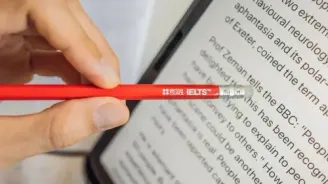Intelligence and Giftedness Reading Passage
Intelligence And Giftedness Reading Passage
Paragraph A: The French Minister of Education, in 1904, tried to find a way to filter the unable from the merely lazy as he was having only limited resources for schooling. The task of devising selection principles was given to Alfred Binet, who offered a clever solution which became a milestone in the study of intelligence. It was the forerunner of intelligence tests used still today. In 1905, he designed a thirty-problem test which measures different abilities of intellect like judgment and reasoning. This test determines the child’s mental age based on their performance. For example, if a five-year-old child gets ten items correct on average, then a child with a mental age of five should score 10. It means what they perform as well as others of that age. Then, the child’s mental age is compared to his physical age.
Paragraph B: If there is a disparity between the child’s mental age and his physical age, then it suggests inability instead of laziness, which means he needs special schooling. However, Binet denies the test measures intelligence. Its intent was simply diagnostic, for selection only. Later, numerous problems and misunderstandings occurred as the message was lost.
Paragraph C: Though Binet’s test was popular, it was a bit difficult to tackle the variety of physical and mental ages. So, Wilhelm Stem, in 1912, devised a formula where the mental age is divided by the physical age and multiplied the result by 100. An average child would score 100, irrespective of age. If it is less than 100, then he or she needs help, while scoring more than 100 means a child is well ahead of his peers.
Paragraph D: The measurement of intelligence is now termed as IQ (Intelligence quotient) score, and its purpose is to indicate how a person, adult or child performs relative to others. In 1916, Lewis M. Terman, a professor of psychology and education at Stanford University, coined the term IQ, who has done significant revisions to Binet’s test called the Stanford Binet test, versions of which are still given extensively.
Paragraph E: Psychometrics, a field for studying intelligence and developing tests, is combined with psychology as a subfield. ‘Psycho’ means ‘mind’, and ‘metrics’ means ‘measurement’. In 1917, when Einstein published his grand theory of relativity, the practical side of psychometrics became popular, which are development and use of the tests. Germany’s submarine warfare triggered the United States to enter the First World War in the same year. The military had to develop an army quickly, but it had around two million inductees to segregate. Psychometricians developed two intelligence tests to sort them out. This was the first major use for testing. The tests were given under horrible conditions; the examiners seemed to have a low level of common sense, and most of the recruits had no idea about what to do. In some sessions, the inductee's score was zero. Also, the examiner's conclusion was astounding, which states that from their testing, the average American adult’s intelligence was equal to the thirteen-year-old's intelligence.
Paragraph F: Intelligence testing also had political and social prejudice. They used to argue that Jews should be set apart from the United States as they are intellectually inferior and would pollute the racial mix. Also, blacks are not permitted to breed at all. This kind of abuse and test bias forms criticisms against psychometrics.
Paragraph G: Measurement is an inevitable element of science and technology. Science can advance only further if the measurement devices improve. Psychometrics tried for a longer period of time to develop ways to measure psychological qualities, including intelligence and more specific abilities, extroversion, emotional stability, compatibility with marriage partners, and so on. If teachers and parents start to see IQ as a definitive thing, it will take on a life of its own. It became a main issue in the 70s where the Courts put cases to stop everyone from making decisions based on IQ score. One of the major criticisms is that they don’t really measure intelligence; whether intelligence can be measured at all is being controversial. Some say it cannot measure intelligence, and others say IQ tests attain great achievements.
Intelligence and Giftedness Reading Questions and Answers
Discover exciting and informative IELTS reading answers about Intelligence and Giftedness.






